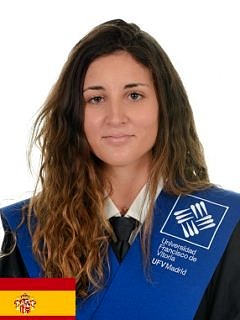Begoña Parrondo
Begoña Parrondo
Gaststudentin (Francisco de Vitoria University, Madrid, Spain)
PCL based electrospun fibers with incorporated bioactive glass (nano)particles for wound healing applications
Betreuer: Lena Vogt, Prof. Aldo R. Boccaccini
Chronic wounds are still a global healthcare issue [1]. Over the last years, electrospun polymeric nanofibers have been investigated to mimic the frame structure of ECM, thereby providing an ideal environment for wound healing [2]. However, the need for novel biodegradable polymers is emerging, as most of the existing require complex and costly synthesis procedures. In order to improve commercial and clinical implementation, a new combination of biodegradable polyesters with suitable mechanical properties will be investigated and fibres will be developed by electrospinning. In addition, bioactive glass particles will be studied as filler in such biopolymer fibres following previous studies at the FAU Institute of Biomaterials [3].
[1] Jiang S, Ma B, Reinholz J, Li Q, Wang J, Zhang K et al. Efficient Nanofibrous Membranes for Antibacterial Wound Dressing and UV Protection. ACS Applied Materials & Interfaces. 2016;8(44):29915-29922.
[2] Yu H, Chen X, Cai J, Ye D, Wu Y, Fan L et al. Novel porous three-dimensional nanofibrous scaffolds for accelerating wound healing. Chemical Engineering Journal. 2019;369:253-262.
[3] Liverani, L., et al., Incorporation of bioactive glass nanoparticles in electrospun PCL/chitosan fibers by using benign solvents, Bioactive Materials 3 (2018) 55-63.

